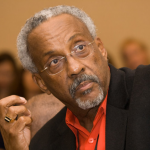‘Learning to choose the goals we use our emotions for is a large part of growing up. When angry, rather than striking out, we choose to use the emotion as determination to correct an injustice,’ said Michael F. Broom, Ph.D.
BY MICHAEL F. BROOM, Ph.D., Organization Development Psychologist
Emotions have a poor reputation in the world of organizations and leadership. Our socialization leads us to believe that leaders should be rational and avoid the loss of control that emotions represent.
That couldn’t be further from the truth. The dispassionate, emotionless leader cannot generate the emotion-based enthusiasm and eagerness that is a hallmark of the most effective leaders.
We’ve been taught that emotions are the enemy of rational thinking, but that is also not true. Emotions working in service to intellect drive leaders to accomplish the loftiest of goals. Intellect points us in the right direction. Emotion puts us in motion to go there. They are our vehicle of motivation.
The more we care about something, the stronger the emotion and the more persistent and potent are our actions. What we care little about, we give little energy.
It is ironic that our society highly values achievement and productivity but devalues emotions. High levels of achievement only occur when we feel strongly about what we want to accomplish.
Emotions want to make something happen, and each has its own goal. Their goals all begin from two basic experiences: pain and pleasure. They trigger a variety of emotions.
- PLEASURE is the sense of satisfaction and enjoyment that includes the experiences of connectedness, effectiveness, and wholeness. Joy, fun, happiness, excitement, contentment, and love are all experiences of pleasure. Their goal is to have us seek more of the same.
- PAIN is the experience of physical or emotional damage: a loss of integrity and wholeness. For example, a cut is a break in our physical connectedness. Feeling hurt is a break in our connectedness with another. Pain-related emotions want us to do whatever might help end the pain. For example:
- a) FEAR is the desire to escape some pain or threat of pain.
- b) ANGER is the desire to destroy, remove, or warn away some threat or cause of pain.
- c) ANXIETY is our getting ready to deal with some (real or imagined) threat of pain.
- d) GUILT wants us to seek expiation and forgiveness for having caused pain.
- e) SADNESS has us grieve the loss of something perceived as part of our wholeness and pleasure. Grief is the process of regaining wholeness.
Sometimes, the immediate goal of an emotion conflicts with other goals. For example, our anger may want us to strike out violently, an action guaranteed to damage meaningful relationships. Fear wants us to run away when facing the fear might be a more useful response.
Allowing emotions to direct us rather than our directing them is the reason emotions have a bad reputation. When we say, “I am angry” or “I am afraid,” as if these feelings are who we are. Hence, we are supported in doing what our emotions want us to do.
Emotions are not who we are but something we have. We can choose to manage our emotions rather than be managed by them.
Learning to choose the goals we use our emotions for is a large part of growing up. When angry, rather than striking out, we choose to use the emotion as determination to correct an injustice.
Effective leaders treat emotions like we do our hands. We are not our hands; we have them and use them to accomplish our goals, not their goals. Have your emotions; don’t allow them to have you.
Leaders, by definition, have someplace to go. The stronger they and their followers feel about that some-place-to-go, the more energy they will put into getting there—as long as they direct that emotional energy rather than be directed by them. Leaders use their emotions to get where they want to go.
 Michael F. Broom, Ph.D., has been an organization development psychologist for 45 years. He consults with organizations of all types, including Google and Genentech, among others. He has taught at major universities, including Johns Hopkins and American. For more information, you can contact him at www.chumans.com or michael@chumans.com.
Michael F. Broom, Ph.D., has been an organization development psychologist for 45 years. He consults with organizations of all types, including Google and Genentech, among others. He has taught at major universities, including Johns Hopkins and American. For more information, you can contact him at www.chumans.com or michael@chumans.com.








